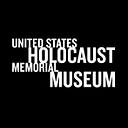How would today’s atrocity prevention experts have evaluated Kristallnacht?
Eighty years ago, on the night of November 9–10, 1938, the Nazi regime unleashed mass violence against Jews throughout the German Reich. Rioters burned hundreds of synagogues and Jewish institutions as firefighters stood watching. They also raided homes, destroyed businesses, and beat Jews in the streets. At least 91 Jews died that night, and police records document rapes and suicides. Immediately afterward, as many as 30,000 Jewish men were arrested and sent to local prisons or concentration camps. The night of November 9–10, 1938, became known as “Kristallnacht” — the Night of Broken Glass.
In 1938, the term “genocide” had yet to be coined. While Kristallnacht made global news, the Holocaust was still, for many, unimaginable. Now we know that Kristallnacht was a warning of what was to come: the largest campaign of mass violence in recorded history. Within seven years, Nazi Germany and its collaborators would murder six million Jews as well as other victims at killing centers, mass shooting sites, and a vast system of camps and ghettos.
In the Holocaust’s aftermath, survivors spearheaded a movement to ensure such crimes would never happen again. Governments, policy makers, and scholars now support that effort, and they have come to realize that prevention is key. Some progress has been made: The international community today is more willing to use tools like diplomacy, sanctions, and peace-keeping forces to prevent or stop mass atrocities. And yet, far too often, the world looks on as genocide and mass atrocities are committed in places like Bosnia, Rwanda, Darfur, and, more recently, Iraq, Burma, and Syria.
One area of progress is the field of genocide studies. Scholars have now identified factors that show a country to be at risk of genocide and mass atrocities (systematic, large-scale violence directed against civilian populations). The Museum’s Simon-Skjodt Center for the Prevention of Genocideand Dartmouth College have drawn upon this research to develop the Early Warning Project, which analyzes various countries’ level of risk to help policy makers work to alleviate the threats. What leads a country to be judged “at risk” for mass atrocities? The Early Warning Project looks globally for countries displaying certain factors, such as political instability and infringement on civil liberties, that have historically been associated with risk of mass atrocities. It then monitors a set of high-risk countries in real-time and, for selected cases, conducts deeper assessments with country experts.
Looking back, we can see that Germany displayed many of the risk factors for mass violence long before Kristallnacht, including instability; discrimination and violence against groups; dangerous speech; and armed ideological groups. It suffered large-scale political instability during the period between World War I and 1933, when Adolf Hitlerwas appointed chancellor. Within a few months, the Nazi regime suspended rights, abolished freedom of the press, outlawed political parties, and empowered Nazi paramilitaries to incarcerate political opponents in concentration camps without due process. It also issued hate-filled propaganda directed against Jews and permitted persecution and acts of violence against Jews. In 1935, Nazi Germany adopted the Nuremberg Race Laws, which defined Jews as a race that threatened “German blood and German honor,” took away German Jews’ citizenship, and laid the foundation for persecuting Jews based on their birth.
In fall 1938, German authorities expelled thousands of Jews of Polish origin living in Germany, including the parents of 17-year-old Herschel Grynszpan, who was living in Paris. On November 7, he visited the German embassy and shot the diplomat assigned to help him, who died two days later. Hitler used this incident to escalate persecution of the Jews. He authorized Nazi leaders to organize the mass violence of Kristallnacht as a supposedly spontaneous reaction to the assassination.
Although warning signs had been evident since 1933, Kristallnacht is when Nazi persecution of Jews took an overt turn toward genocide. “While Germany showed signs of being at risk of mass atrocities long before Kristallnacht, scholars today would have tracked an event like that as a trigger,” said Lawrence Woocher, research director at the Simon-Skjodt Center. “It often takes a spark before atrocities occur.”
Because of the Holocaust, institutions including the Simon-Skjodt Center track risk factors and warning signs that could forewarn of mass atrocities. Most governments have pledged to prevent and respond to atrocities; the issue has received overwhelmingly bipartisan support in the United States. Meanwhile, the Museum has become a sought-after destination for training members of the military and government officials, many of whom take a tour focused on early warning signs.
The efforts to understand the factors that can lead to genocide help us recognize the significance of Kristallnacht: It was a clear signal that the situation for Jews in the German Reich could become far worse without intervention. Mechanisms such as the Early Warning Project now help us to identify and focus on areas at risk of mass atrocities with the goal of doing for people now and in the future what was not done for the Jews of Europe.
Barbara E. Martinez is a senior editor at the United States Holocaust Memorial Museum.
